If it’s one thing we at FatherSonBirding hammer over and over again, it is the 3 Ps: Planning, Persistence, and Preparation.
Okay, actually, we have never talked much about this, but it’s a catchy concept, isn’t it? The 3 Ps, in fact, came very much into play recently when, after our rather disappointing birding in Boston, Braden and I headed up the coast to a place Braden had carefully researched (P Number 1) ahead of time: the Parker River National Wildlife Refuge.
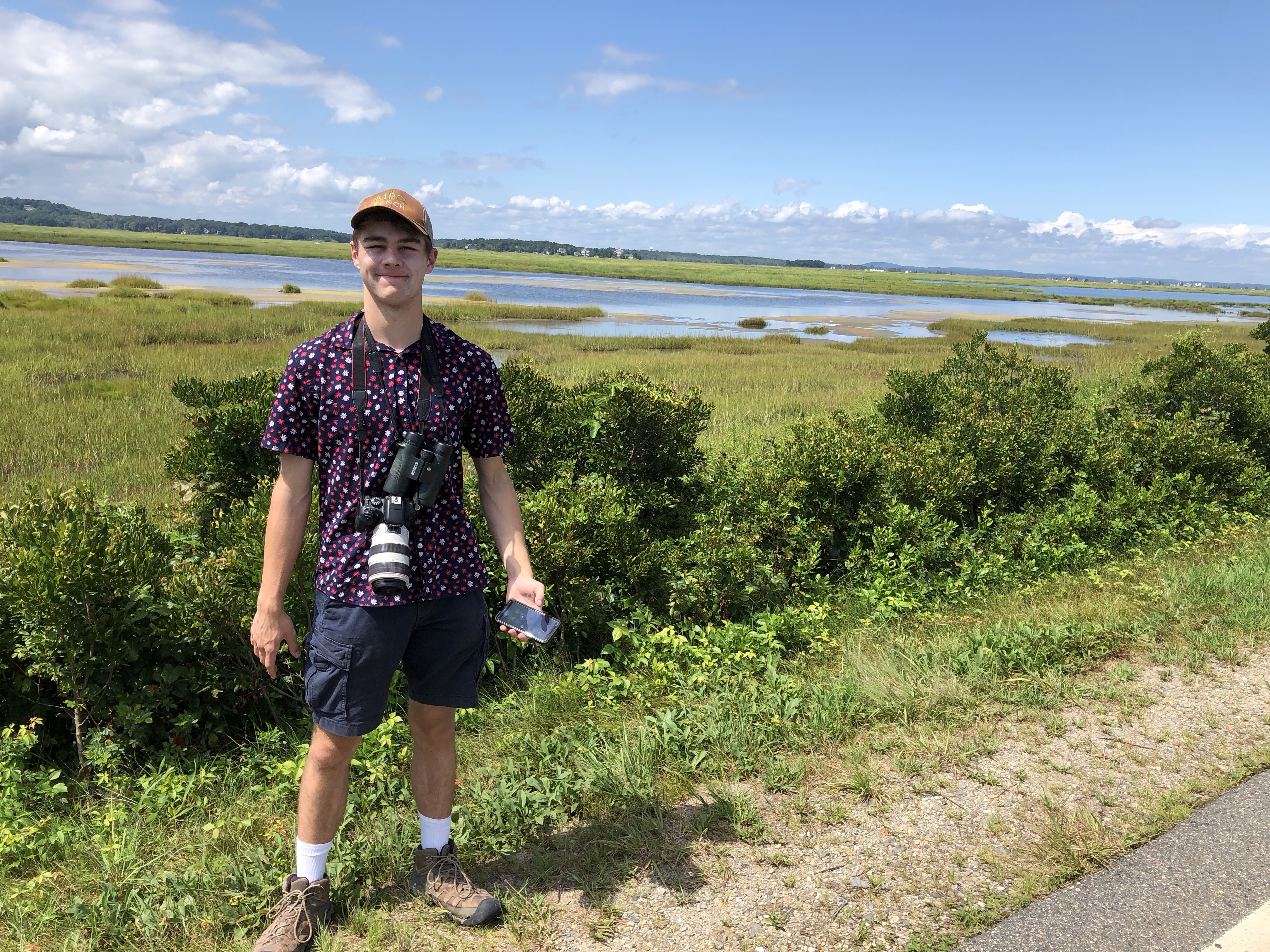
I had actually never heard of Parker River before, but Braden learned about it from some online birding buddies and checked it out to see if it was “visit-worthy”. His verdict? Definitely. Not only might we collect a handful of Life Birds there, the refuge protected one of his top ABA target birds: Saltmarsh Sparrow.
Now, I have to say that when we visit a National Wildlife Refuge, I generally expect a pretty low-key, rarely visited location. Imagine my surprise when we encountered a mini traffic jam waiting to get in. In fact, it became evident that the refuge served not only to protect wildlife, but as a critical outdoor outlet for congested coastal Massachusetts. Our visit started auspiciously with a stop at Lot 1, where we got a quick fly-over of a Baltimore Oriole—the only one we would see on our trip. Crossing the highway, we encountered an even cooler surprise: the closest looks we’d ever had of Semipalmated and Least Sandpipers! This was especially useful after the ID struggles we’d had with birds in eastern Washington only weeks before, and it really helped us examine the unique properties of each.
As we moved on, though, Braden felt pessimistic about seeing Saltmarsh Sparrows. He had Planned. He had Prepared himself with knowledge. But Boston had put an “unlucky” vibe in his head. As we made our second stop along the refuge’s main road, however, he suddenly shouted, “I see them!” Indeed, not thirty feet from us, at least four or five fairly nondescript little birds bumbled about in some tall marsh grass, seemingly not knowing what they were doing. “They seem like juveniles,” Braden surmised, and having studied this species quite a bit, he would know.
Saltmarsh Sparrows used to be lumped with Nelson’s Sparrows as one species, the Sharp-tailed Sparrow. As its own species, however, the Saltmarsh Sparrow occupies a narrow range of saltmarsh habitat along the East Coast and, in fact, requires this habitat for nesting. Because of this, it is at extreme risk from higher sea levels caused by climate change, and its population has been steadily declining. This makes protecting places like Parker River NWR even more important—and made us feel especially privileged to have such a close experience with them.
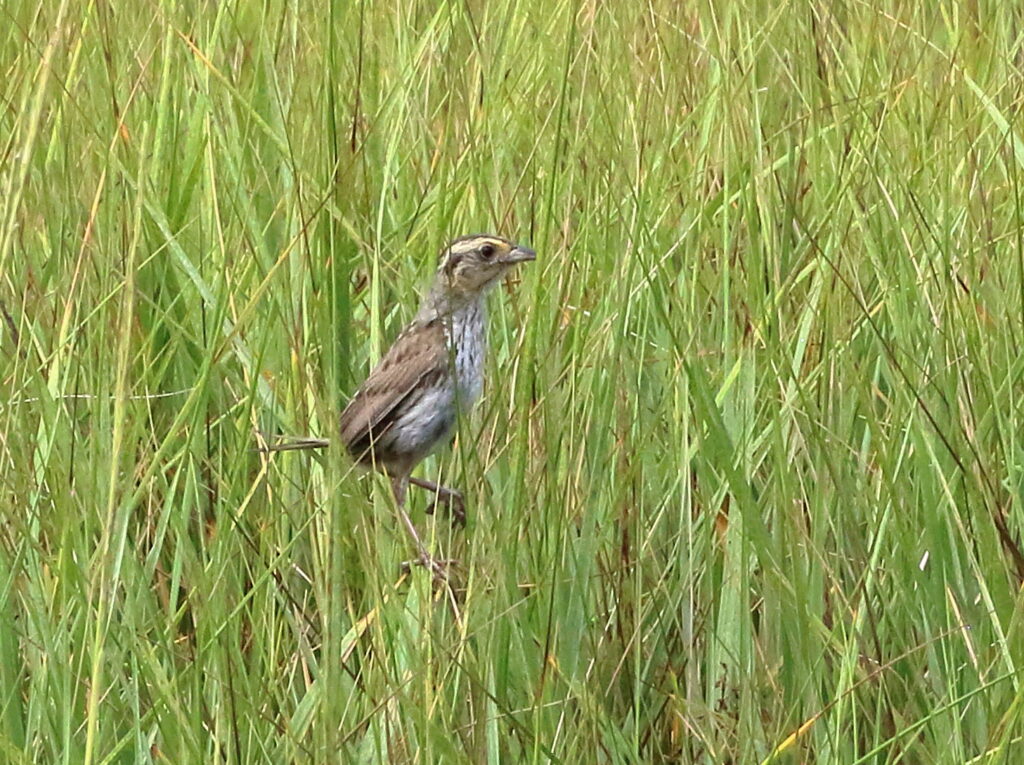
Leaving the Saltmarsh Sparrows, we continued to hit other places in the refuge and were rewarded with a host of Year Birds, and two more Life Birds: Purple Finch and Great Crested Flycatcher—our number one ABA need to that point. Which all demonstrates the third P of birding: Persistence. Sure, luck plays a role, but just getting out there again and again will eventually take luck out of the equation, something we learned for the thousandth time at Parker River.
Click for a link to our largest Parker River checklist. Crazy migrating swallows!

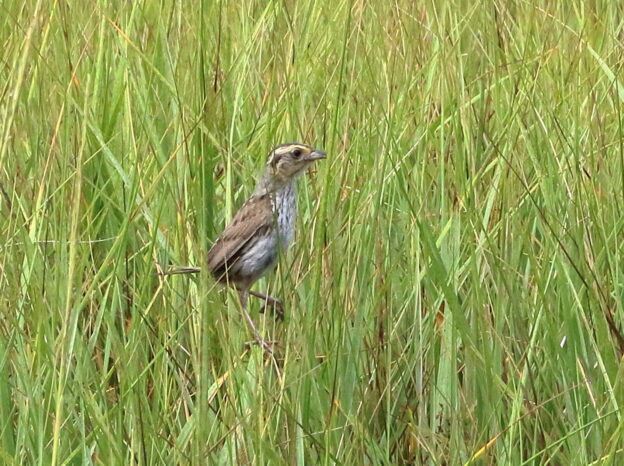
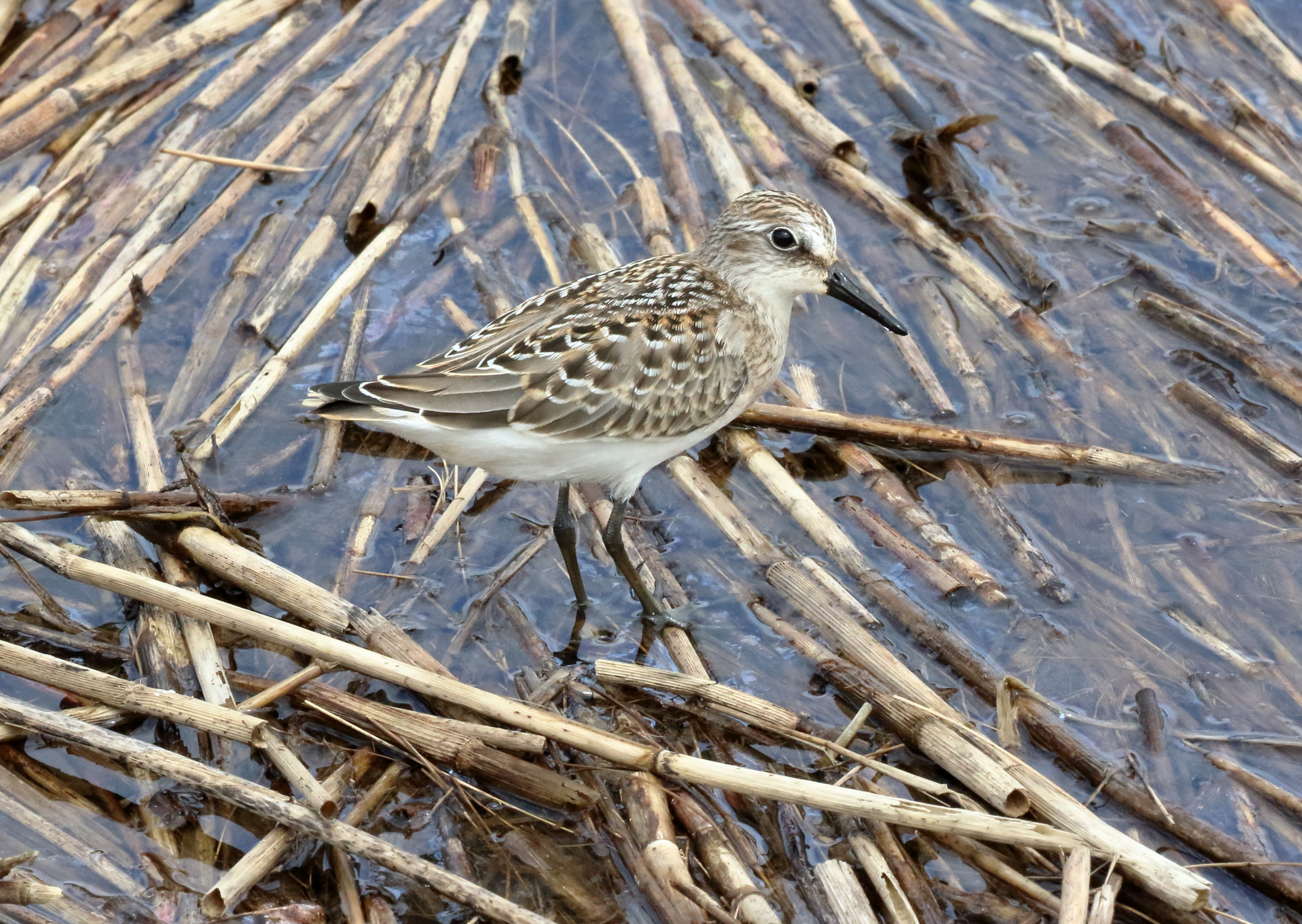
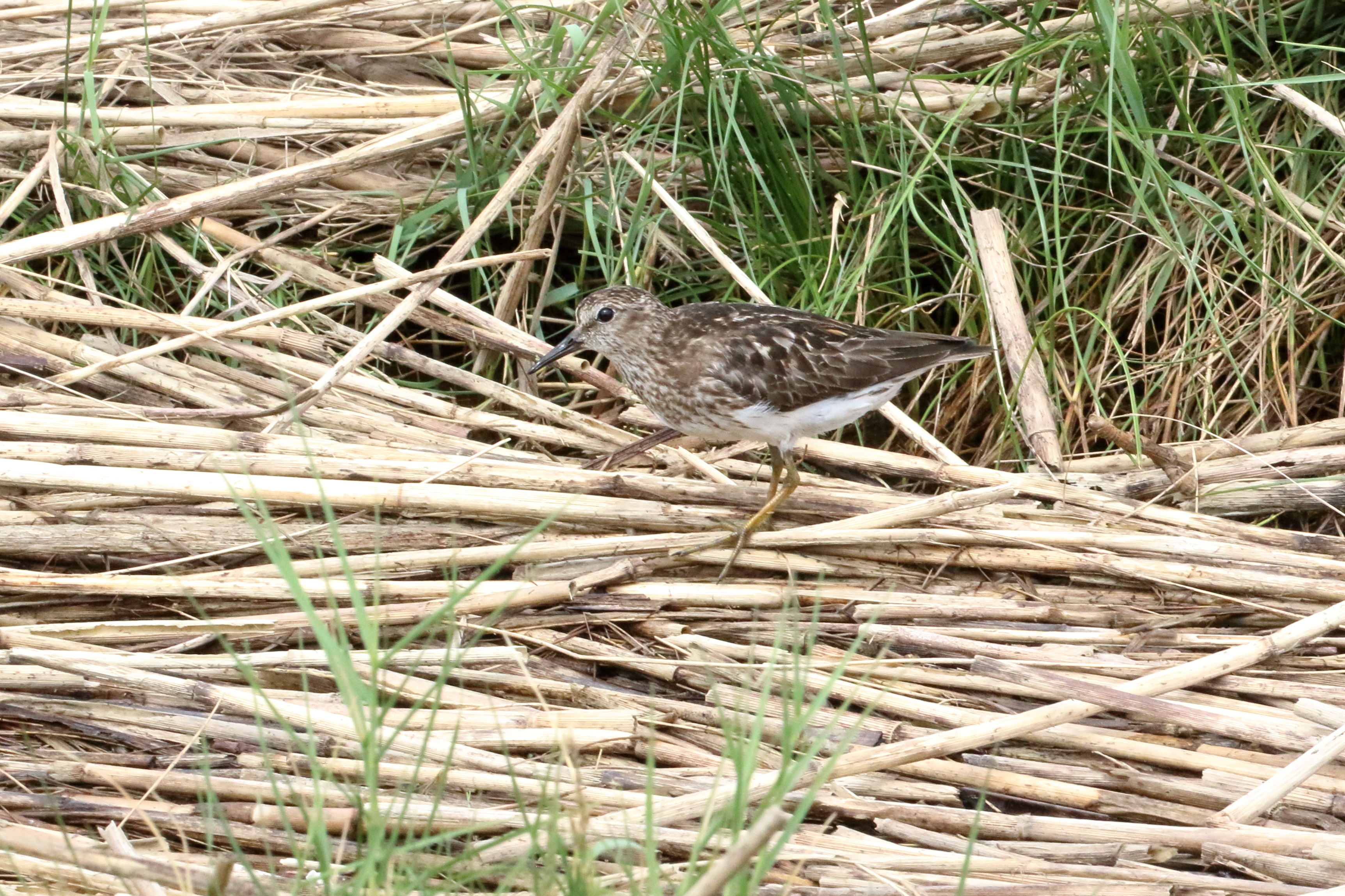
Hey, don’t forget the fourth P of birding: Peaceful. Which is the state of mind you achieve when you’re in a beautiful place, thinking about birds and not one’s problems!
Nice peep photos and mini ID lesson. Congrats on the Saltmarsh Sparrows.
I googled Great Crested Flycatcher. Looks so much like an Ash-throated Flycatcher. C’mon birds, give us confused pink monkeys a break, lol.
Bird on!
Yes, P is for Peaceful! Maybe the most important P of all!
And yes, those flycatchers are tough. Range maps help sometimes, but other times not. Off to bird!